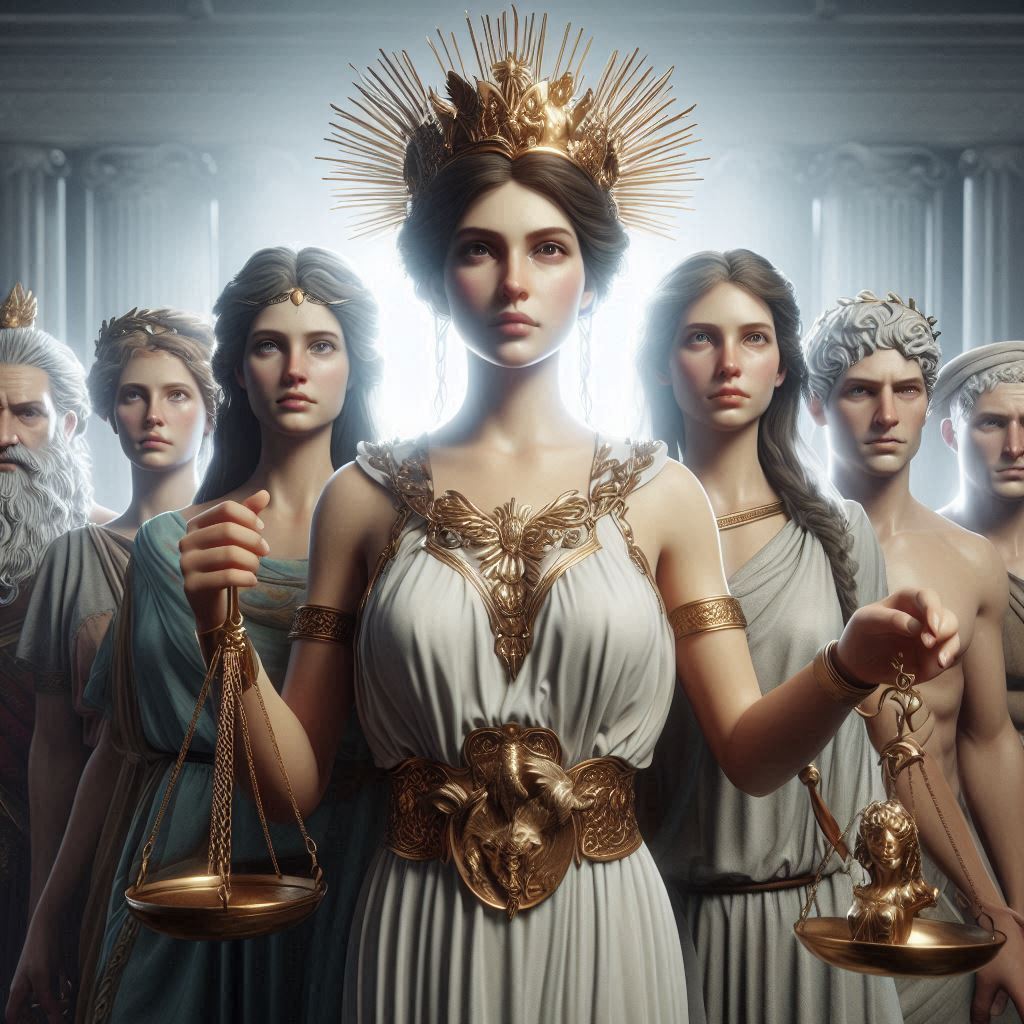Table of Contents
Justice, Guilt, and Retribution in Agatha Christie’s And Then There Were None
Agatha Christie’s And Then There Were None (1939) is a masterpiece of mystery fiction, renowned for its intricate plot, psychological depth, and exploration of moral ambiguity. The novel follows ten strangers who are invited to Soldier Island under various pretexts, only to be accused of past crimes and systematically murdered in accordance with a sinister nursery rhyme. Through its suspenseful narrative, Christie examines themes of justice, guilt, and retribution, forcing readers to question the nature of morality and punishment. This essay will analyze these themes in depth, exploring how Christie constructs a narrative that is as much a psychological study as it is a murder mystery.

The Illusion of Justice: Vigilantism vs. Legal Punishment
At the heart of And Then There Were None is the question of justice. The orchestrator of the murders, Justice Lawrence Wargrave, is a retired judge who believes that the legal system has failed to punish the ten guests for their crimes. He takes it upon himself to serve as judge, jury, and executioner, meticulously planning each death to mirror the verses of the nursery rhyme “Ten Little Soldiers.”
Wargrave’s Twisted Sense of Justice
Wargrave’s motivations are revealed in the epilogue, where his written confession outlines his belief that the guests are guilty of murder but have escaped punishment due to legal technicalities or lack of evidence. His actions suggest a belief in absolute justice—one where no criminal evades retribution. However, his methods are deeply hypocritical:
- Self-Appointed Authority: Wargrave assumes the role of a divine punisher, yet he himself commits murder, undermining his moral high ground.
- Lack of Due Process: Unlike a legal trial, where evidence is examined and defenses are heard, Wargrave’s “justice” is summary and irreversible.
- Psychological Torture: The guests are forced to confront their guilt before dying, making their deaths not just physical punishments but mental torments.
This raises a critical ethical dilemma: Can murder ever be justified as justice? Christie does not provide a clear answer, leaving readers to wrestle with the ambiguity.
The Failure of Legal Systems
Many of the guests did evade legal consequences:
- Vera Claythorne let a child drown to inherit money but was never prosecuted due to insufficient evidence.
- Dr. Armstrong caused a patient’s death through drunken negligence but was shielded by his reputation.
- Anthony Marston ran over two children but faced no repercussions due to his wealth.
By highlighting these legal failures, Christie critiques the imperfections of the justice system. However, she also shows the dangers of extrajudicial punishment—Wargrave’s actions are not righteous but monstrous.
Guilt and Psychological Torment
Beyond physical punishment, Christie explores the psychological effects of guilt. Each character reacts differently to their impending doom, revealing their moral compass (or lack thereof).
Vera Claythorne: The Weight of Conscience
Vera is one of the most psychologically complex characters. Her guilt over Cyril’s death manifests in hallucinations and paranoia. Unlike others, she does not deny her crime but is haunted by it. Her final breakdown—hanging herself in a moment of hysterical guilt—shows that, for some, conscience is a more brutal executioner than any outside force.
Dr. Armstrong: Denial and Self-Deception
Armstrong represents those who rationalize their crimes. He convinces himself that his patient’s death was an accident, not negligence. Yet, as the murders progress, his fear grows, suggesting subconscious guilt. His eventual murder (lured by Wargrave’s deception) symbolizes how self-deception can lead to downfall.
Philip Lombard: Moral Indifference
Lombard is unrepentant for abandoning African travelers to die, viewing it as a necessary act of survival. His lack of guilt makes him one of the most composed characters—until his final confrontation with Vera. His pragmatic amorality contrasts sharply with Vera’s torment, illustrating different responses to guilt.
The Others: Hypocrisy and Fear
- Emily Brent condemns others while refusing to acknowledge her own role in her servant’s suicide.
- William Blore framed an innocent man but only fears death, not remorse.
- Anthony Marston shows no guilt whatsoever, embodying pure sociopathy.
Christie’s characterizations suggest that guilt is subjective—some are destroyed by it, while others ignore it entirely.
Retribution and the Inevitability of Death
The novel’s structure reinforces the inevitability of retribution. The island is a closed environment, a microcosm where no one escapes punishment.
The Nursery Rhyme as Fate
The “Ten Little Soldiers” rhyme serves as a countdown to doom. Each death follows the rhyme precisely, creating a sense of predestination. This structure suggests that:
- Retribution is Inescapable: No matter how the guests try to survive, fate (or Wargrave’s plan) ensures their deaths.
- Order in Chaos: Despite the panic, the murders follow a strict pattern, mirroring Wargrave’s judicial precision.
The Island as a Prison
Unlike typical whodunits where suspects can flee, Soldier Island is isolated—cut off from the mainland by weather and circumstance. This isolation:
- Heightens tension (no escape, no outside help).
- Symbolizes moral imprisonment (the guests are trapped with their guilt).
Wargrave’s Suicide: The Hypocrisy of the Executioner
In his confession, Wargrave admits to staging his own death to complete his plan. Yet his suicide is revealing:
- He cannot escape punishment either—his death is necessary to maintain the illusion of mystery.
- He becomes a victim of his own design, showing that absolute justice is impossible, even for the judge.
Literary Techniques and Narrative Structure
Christie’s brilliance lies not just in plot but in execution. Key techniques include:
Unreliable Narration
- The third-person limited perspective shifts between characters, making the reader question each person’s trustworthiness.
- Wargrave’s fake death misleads both characters and readers, enhancing the mystery.
The Absence of a Detective
Unlike most Christie novels, there is no Poirot or Marple to solve the crime. Instead, the killer is among the victims, creating a claustrophobic, paranoid atmosphere.
The Epilogue’s Revelation
The postscript, where a fisherman finds Wargrave’s confession, is crucial. Without it, the novel would remain unsolved—a bold narrative choice that underscores the theme of hidden guilt.
Conclusion: A Moral Labyrinth
And Then There Were None is more than a puzzle—it is a profound meditation on justice, guilt, and human nature. Christie challenges readers to consider:
- Whether the guests deserved their fates.
- Whether Wargrave’s actions were righteous or monstrous.
- Whether guilt can ever be truly resolved outside the law.
The novel’s enduring power lies in its refusal to provide easy answers. Like the characters, readers are left stranded on Soldier Island, forced to confront uncomfortable truths about morality and retribution.


No responses yet